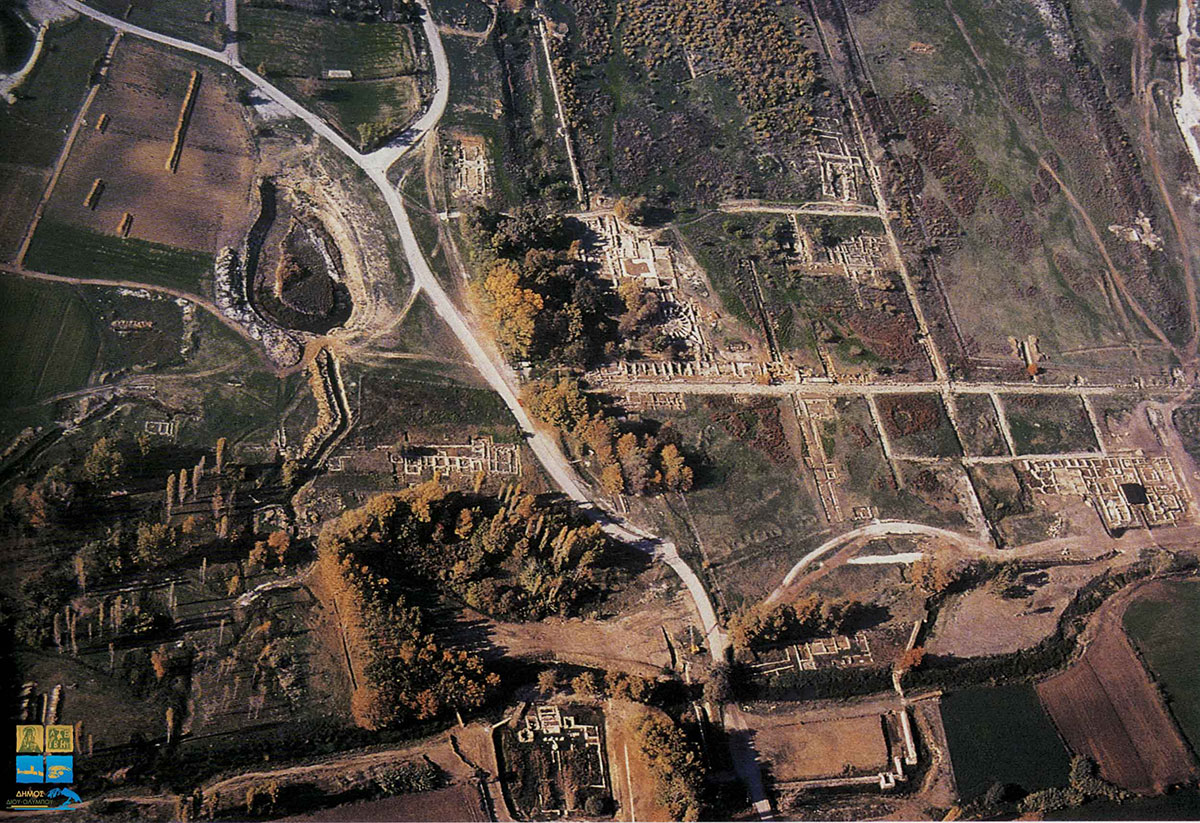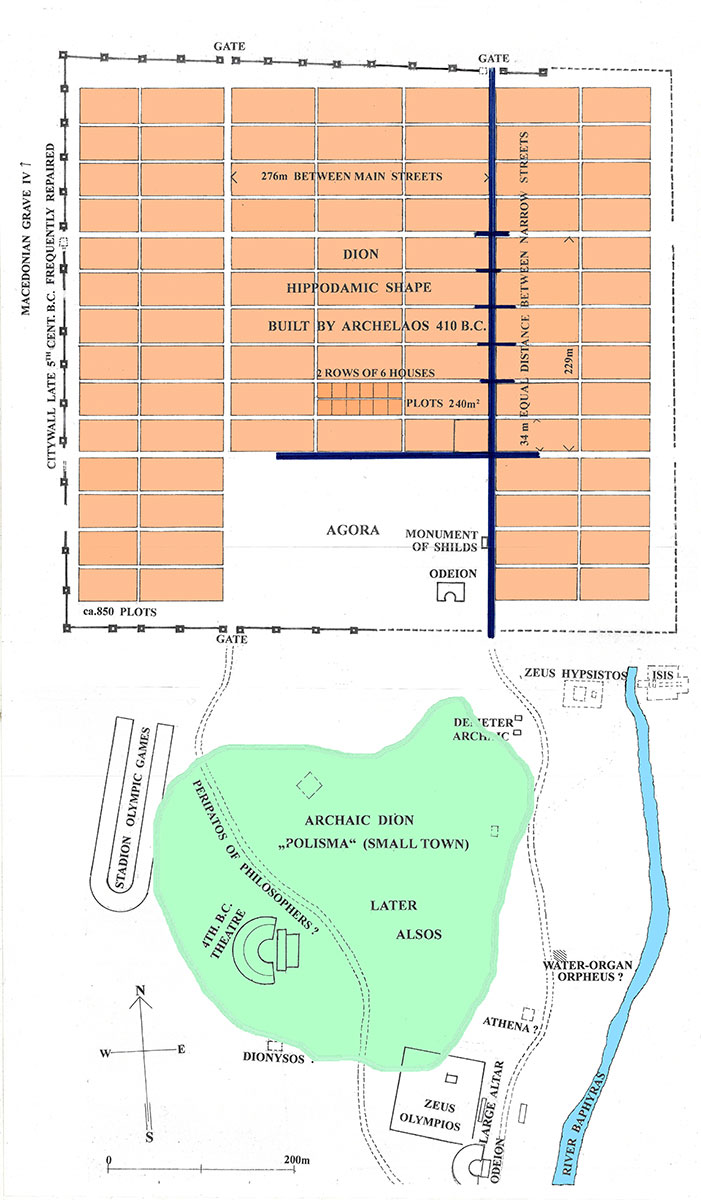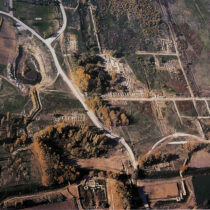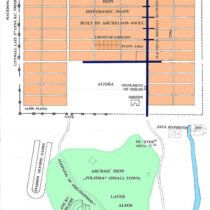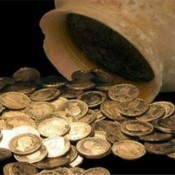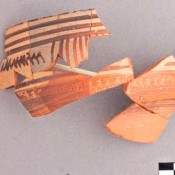When Demetrios Pandermalis died on September 14th, 2022 I lost a friend and excellent colleague, and the international archaeological community lost a great personality. Thanks to his knowledge, enthusiasm, and – not least – his charm he could realize his visions. Millions of visitors admire his superb archaeological museums in Dion and Athens and enjoy the extended archaeological promenade around the Acropolis without traffic.
Demetrios Pandermalis was honored with the Federal Cross of Merit First Class (Bundesverdienstkreuz Erster Klasse) by the Federal Republic of Germany. The President of the German Archaeological Institut, Professor Friederike Fless, held a laudatory speech at the German Archaeological Institut in Athens.
I met Pandermalis in Dion during an excursion through Macedonia in the summer of 1999 together with my colleague Wolf-Dieter Heilmeyer, and many students from our archaeological Institut at Freie Universität Berlin. As a specialist in Greek town planning (note 1), I was glad to discuss problems of the topography of ancient Dion with the excavator himself. Unfortunately, we did not find another opportunity to continue our discussion in situ. The plans that I prepared in the meantime have been forgotten, and only now did I remember these faded drawings.
It is not necessary to describe the unique importance of the site of Dion in the plain of Pieria, at the foot of Mount Olympos (fig. 1). This is done skilfully by Pandermalis himself, also in German (note 2). The previous excavators had concentrated their work on the nearly rectangular city wall with more than 500 m in length on each side. Most important are the investigations of Theodosia Stephanidou-Tiveriou (note 3). She showed that the first phase of the fortification consists of isodomic stonework of Classical or early Hellenistic times.
Very unusual are the absence of sanctuaries inside and the juxtaposition of several sanctuaries outside the walled city (fig. 2). At a distance of 250 m south of the gate is located the most important sanctuary, that of Zeus Olympios, who gave his name to the town. Alexander sacrificed here before he started his campaign for Asia. Εκατόμβες και Σωτήρια entitled Pandermalis his article presenting the results of the excavation, including important inscriptions (note 4).
It must be added here that excavation in areas at the foot of Mount Olympos is extremely difficult because the water table lies directly under the surface. Digging without several electric pumps is impossible. Nevertheless, it was possible to identify in the area south of the walled town nearly ten different sanctuaries as well as public buildings (note 5).
In 1973 Pandermalis became a Professor at the University of Thessaloniki and Director of the excavations in Dion. Through the annual excavation campaigns in Dion, his students were able to get a broad knowledge of all fields of archaeology. Finds from seven hundred years of life in Dion can be seen in the local museum, one of the best provincial museums of Greece: among them are unique objects, like a water organ (described by Vitruvius, De Architectura X, 7) or a sculptural group of four seated philosophers with books in their hands. Even in late antiquity music and philosophy flourished in this important Macedonian city (note 6). Dion was the only town close to the Olympian Gods and the Muses but also the place where men and animals were under Orpheus’s spell (Pausanias IX, 30, 3-9).
Two main questions can be asked here:
- In the summer of 424 B.C., the Spartan commander Brasidas coming from Thessaly crossed the narrow passage at the foot of Mount Olympos, and as the first town in Macedonia, he reached Dion (Thukydides 4, 78). He calls Dion “πόλισμα“. What kind of small town was Dion at that time?
Pandermalis thought that this polisma was buried deep under the later ruins of the large rectangular walled town. I prefer the interpretation of Semeli Pingiatoglou who believes that this early village must be located near the archaic sanctuaries of Zeus Olympios and the sanctuary of Demeter (fig. 2) (note 7). When this polisma became wealthy, other temene were built at its borders. The exact location and size of this early polisma are not yet known.
When King Archelaos at about 410 B.C. founded the Olympic Games at Dion, plots for new buildings such as the theater, the stadion, guesthouses, and stoes were needed in the vicinity of the sanctuaries. This seems to be the moment when the polisma was abandoned and the walled town was planned and built. Further official buildings for the inhabitants as well as for the participants in the Olympic Games were built in the extremely large Agora of the new town (fig. 2).
Demetrios Pandermalis confirmed the location of the Agora in the town’s southern part. He concentrated his excavation on the eastern part where he discovered a late Roman market square with stoes on three sides. Trenches brought to light the ruins of Hellenistic buildings (note 8).
- The rectangular walled town is usually dated to the time of Cassander, around the end of the fourth century B.C. But the reconstruction of the original plan points to an earlier date.
Most spectacular discoveries were made during the excavation of a wide street crossing the whole town from south to north and parallel to the fortification wall. Roman pavements and the Hellenistic monument to the fallen heroes together with the width of the street suggest that this was an ἀρτηρία (main street) of the original plan (fig. 2). Three other main streets about 7 m wide can be traced according to gates of the city wall (two gates on the west side have been documented) and through streets on four sides of the Agora.
The distance between the main streets in the east-west direction was 276 m and in the north-south direction 229 m. Within this distance, there was space for three blocks separated by two small residential streets (fig. 2) (note 9). The excavation brought to light several small residential streets less than 5 m wide crossing the excavated main street. The interval between these small streets is in any case 34 m. One normal block measured 89 m x 34 m. It was divided by a water channel into two rows of equal plots. Surely, the original plan of Dion was dissolved after a few generations but for the first distribution of house plots to the inhabitants the equality of the plots was inalienable. In Dion, the normal plot of a private house measured very likely 14,80 m x 16,25 m = 240 sq.m. (fig. 2).
Looking for identical systems and house plots of only 240 sq.m. we found none in Hellenistic times. From Alexander, Lysimachus, and Cassander onward, new Hellenistic cities were in general more spacious, with bigger plots and wide streets (note 10). Dion does not belong to this period but must be older. Very similar is the town plan of Kassope, founded around 350 B.C., with house plots measuring 15,50 m x 14,40 m = 223 sq.m. (note 11). And it should be noted that from 400 B.C. onward, weapons and systems of fortifications developed rapidly (note 12). The simple fortification of Dion does not belong to the Hellenistic period.
Excavations to confirm or reject these assumptions should be done despite the aforementioned huge difficulties. One of them is the fact that Dion suffered many destructions. I could cite the vandalizing Aetolians in 219 B.C. who as ἱερόσυλοι did not spare holy sanctuaries (note 13). But the situation is not hopeless. Poseidonia, a Greek city in Magna Grecia (Paestum, in southern Italy) founded in the 6th century B.C., was inhabited for more than 700 years and its main streets remained in use during this period. Nothing was known about the earliest houses until Laura Ficuciello discovered on a property situated at the border of one of the ancient main streets parts of an archaic house covering the natural rock and well dated by its pottery. A room measuring 4,5m x 8m seemed to be the oikos of a Greek house (note 14).
Wolfram Hoepfner
Berlin, March 8, 2023
Online resources for additional images and/or plans:
– D. Pandermalis (ed.), “Dion“, Archaiologia 33 (1989) (Articles in Greek with English summaries).
– Excavations at Dion, School of History and Archaeology, Aristotle University of Thessaloniki (in Greek)
– The archaeological site of Dion, Odysseas Portal, Hellenic Republic – Ministry of Culture and Sports,
– A tour to the important monuments of Dion, Digital Culture – gov.gr, Beta version (in Greek)
